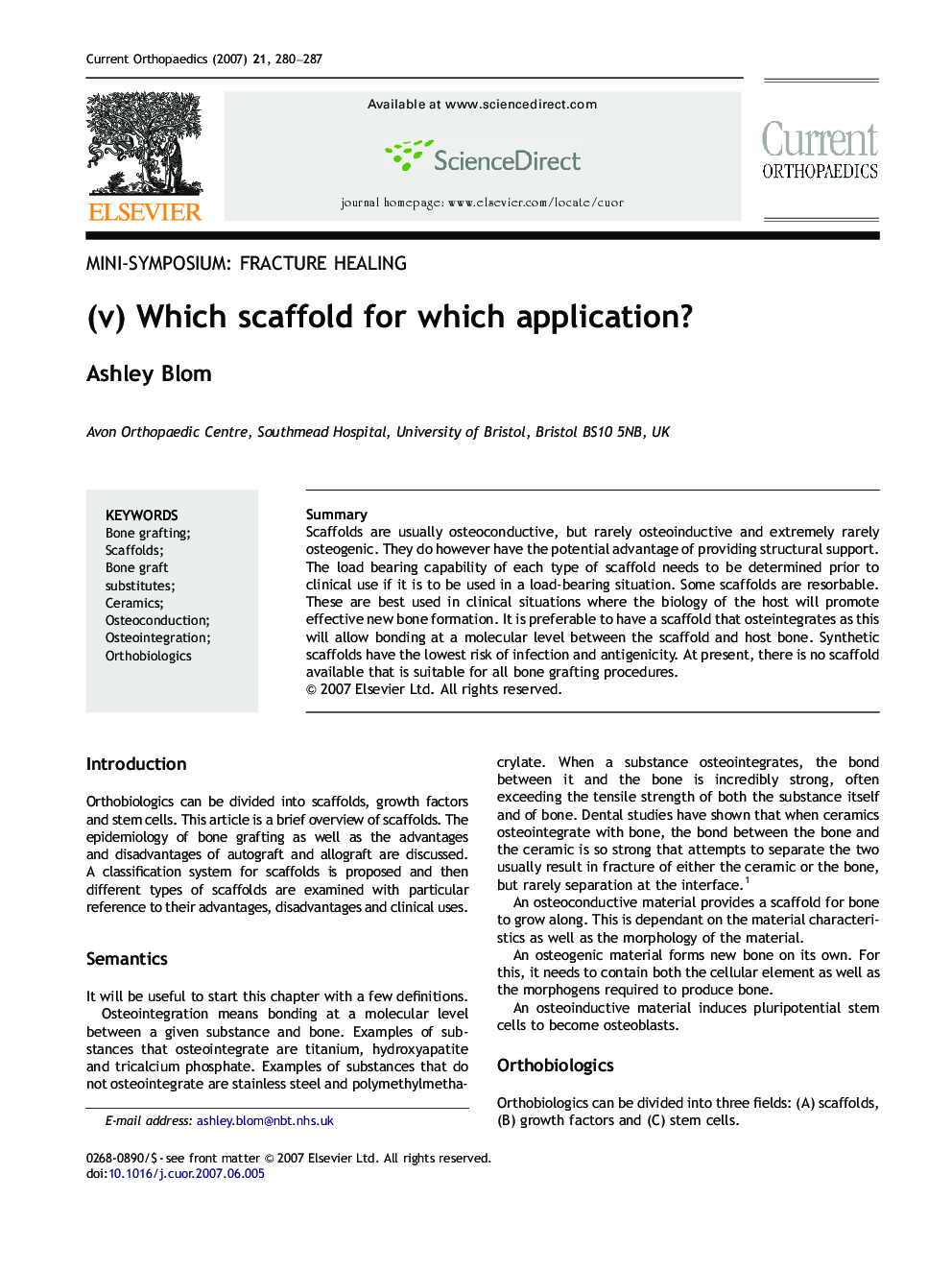| کد مقاله | کد نشریه | سال انتشار | مقاله انگلیسی | نسخه تمام متن |
|---|---|---|---|---|
| 4052900 | 1265250 | 2007 | 8 صفحه PDF | دانلود رایگان |

SummaryScaffolds are usually osteoconductive, but rarely osteoinductive and extremely rarely osteogenic. They do however have the potential advantage of providing structural support. The load bearing capability of each type of scaffold needs to be determined prior to clinical use if it is to be used in a load-bearing situation. Some scaffolds are resorbable. These are best used in clinical situations where the biology of the host will promote effective new bone formation. It is preferable to have a scaffold that osteintegrates as this will allow bonding at a molecular level between the scaffold and host bone. Synthetic scaffolds have the lowest risk of infection and antigenicity. At present, there is no scaffold available that is suitable for all bone grafting procedures.
Journal: Current Orthopaedics - Volume 21, Issue 4, August 2007, Pages 280–287